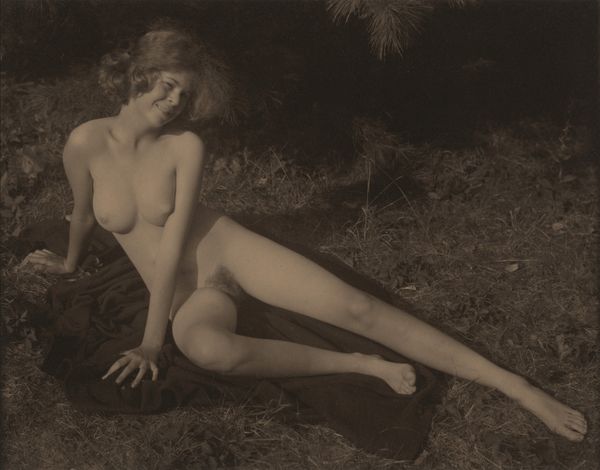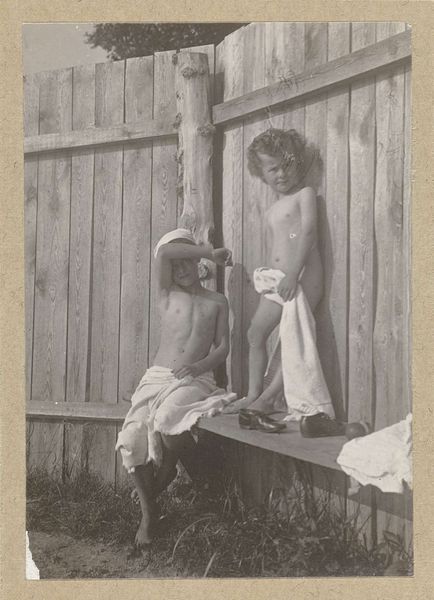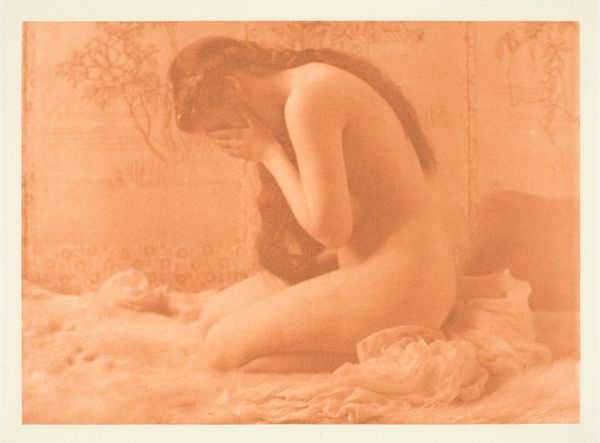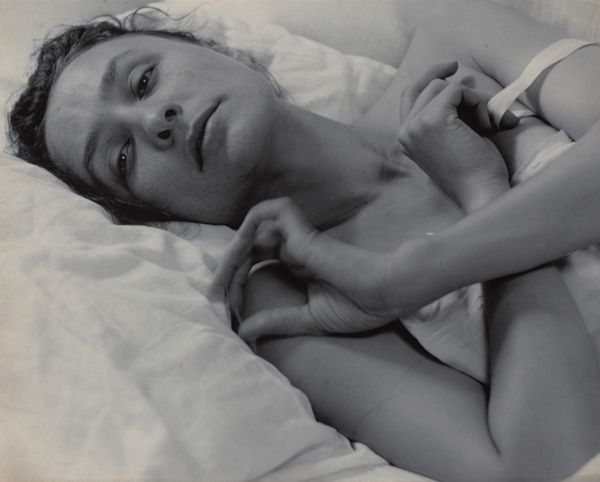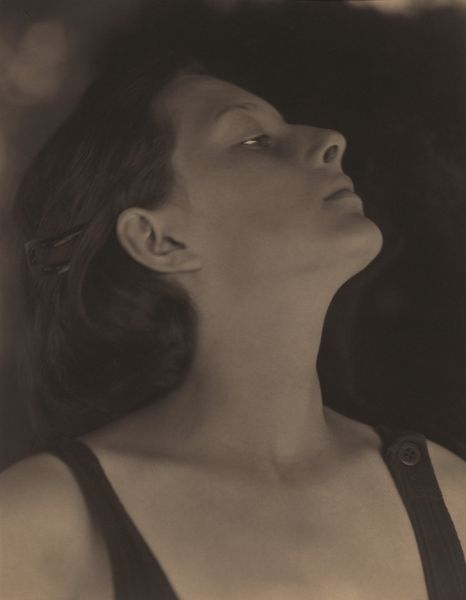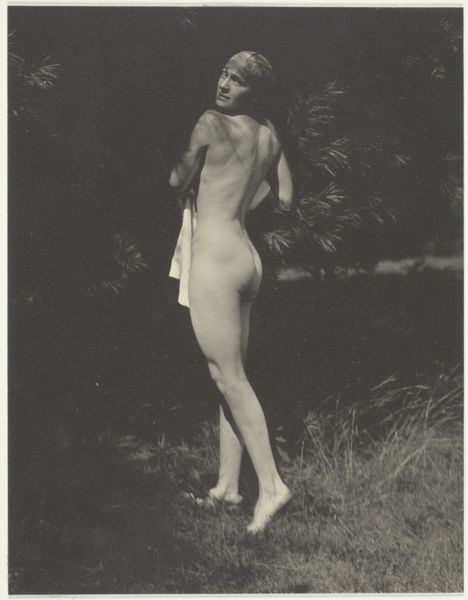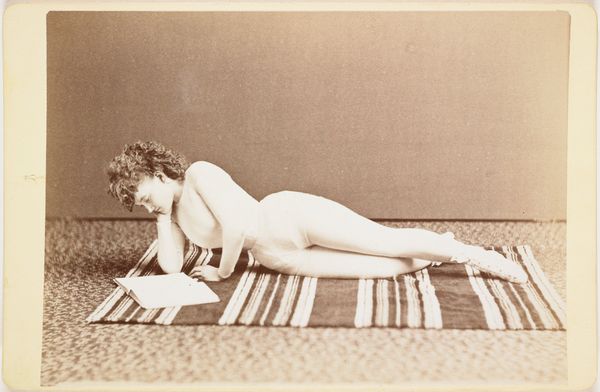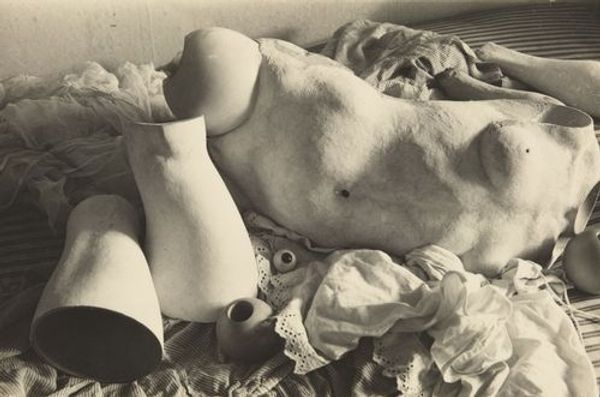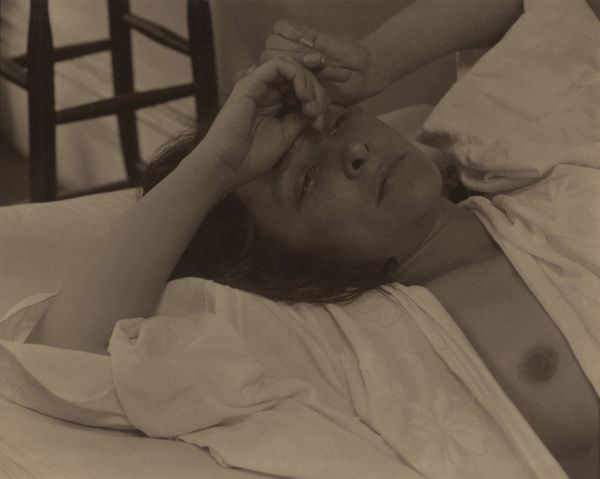
photography
#
portrait
#
pictorialism
#
photography
#
nude
#
modernism
Dimensions: sheet (trimmed to image): 11.5 × 8.9 cm (4 1/2 × 3 1/2 in.) mount: 34.4 × 26.3 cm (13 9/16 × 10 3/8 in.)
Copyright: National Gallery of Art: CC0 1.0
Curator: Standing before us is Alfred Stieglitz's photographic portrait of Georgia Engelhard, dating from between 1920 and 1922. Editor: It's surprisingly intimate, isn't it? The tight framing and soft focus lend it a vulnerable, almost confessional air. Curator: Stieglitz’s involvement with the Photo-Secession movement meant prioritizing emotional effect above all else. In Pictorialism, the subject becomes secondary to exploring inner truths, of portraying underlying human feelings. Editor: Yes, you can see that. The tonal range is narrow. The texture is rich, soft almost like fabric and the pose creates an interplay of light and shadow, emphasizing the curves of the figure without exposing them in a conventional way. This photograph pushes against expected standards. Curator: Consider the implications of the title too; while he did entitle the series featuring such photos "Georgia Engelhard," why identify this young woman while presenting her body nude to the public eye? Remember the prevailing attitude toward the female nude at the turn of the century in modern art… These images challenged social boundaries and sexual perceptions. Editor: Perhaps, though, that’s just part of its formal power too? The tension in the hands, the gaze averted, contributes to a certain dynamic imbalance that unsettles. Curator: That is certainly not an accidental feature! The image feels as if it were caught between the naturalism of the female form and the modernist intent of abstraction. Its presentation encourages active participation and interpretation on the viewer’s end; what could it mean? Why? Who? Editor: I leave here considering the beauty within that subtle compositional interplay. Curator: And, I think, appreciating Stieglitz's ability to portray this as a tender moment.
Comments
No comments
Be the first to comment and join the conversation on the ultimate creative platform.

